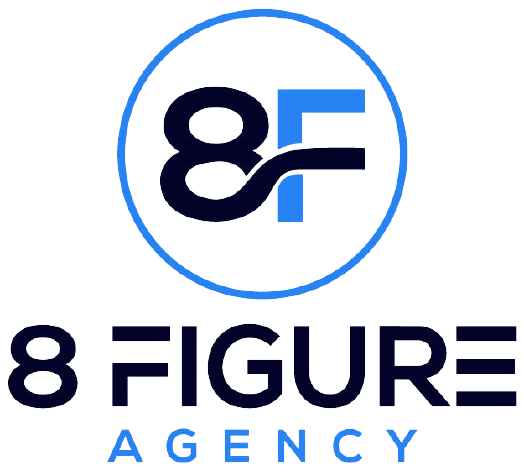Standard Operating Procedures (SOPs) are detailed step-by-step instructions that guide employees on how to perform specific, repetitive tasks within an organization. It keeps everyone on the same page, regarding the business process and industry standards.
The importance of SOPs lies in their ability to establish a structured framework for operations reducing the risk of errors and inconsistencies of current procedures.
In this guide, we will tackle how to make an SOP and why it’s important.
Benefits of Creating SOPs for a Business
Creating well-structured standard operating procedures offers a multitude of benefits that positively impact a business’s operations and bottom line.
SOPs streamline workflows, reducing redundant steps and time wastage. Outcomes become predictable and uniform which is important for minimizing errors and maintaining product and service quality.
Training new employees also becomes more efficient and effective, and allows managers to delegate specific tasks knowing that employees have prior knowledge, previous standard operating procedure examples, and can follow established guidelines for successful execution.
In industries with strict regulations, standard operating procedures help ensure that processes adhere to legal and other industry regulations and standards. They also provide transparency into internal processes that can be regularly reviewed and updated to incorporate feedback and new best practices, fostering a culture of continuous improvement.
Step 1: Identify the Process to Document
The first step to knowing how to make an SOP is to identify the specific business process that needs to be documented.
Determine Which Process Needs an SOP
Identifying the process to document involves assessing your organization’s operations and pinpointing areas where consistency, accuracy, and efficiency are essential. Ask yourself these questions:
- What tasks or activities are critical to our operations? Focus on processes that are central to delivering products or services to customers.
- Which processes are prone to errors or inconsistencies? Prioritize processes that have a history of issues or require a high degree of precision.
- Are there complex side tasks involved that new employees find challenging to learn? Consider processes that are often stumbling blocks during onboarding.
- Do we have regulatory or compliance requirements for certain processes? Processes that require adherence to specific safety guidelines or regulations are prime candidates for SOPs.
The Importance of Choosing the Right Process
Selecting the right process to document is of paramount importance for several reasons:
One, developing a standard operating procedure requires time and effort and the effective use of resources to improve the most critical areas of your operations. By choosing the process with the highest potential for improvement, you maximize your ROI on the effort spent to write standard operating procedures.
Two, a standard operating procedure can simplify the training and onboarding of new employees, mitigate risks, and demonstrate your organization’s commitment to operational excellence and standardization. Choosing the right process sends a message that you are dedicated to improving how your organization functions and its scalability.
Step 2: Gather Information
Once you’ve identified the process that needs to be documented, the next step is to gather the necessary information to create a comprehensive standard operating procedure (SOP).
Identify Stakeholders and Gathering Input
Stakeholders are individuals or groups who have a vested interest in the process you’re documenting. They may include employees who perform the particular task, managers, supervisors, quality control personnel, and even customers if their feedback is relevant.
You may speak with employees, directly involved in the process, about their experiences, challenges, and suggestions for improvement. You can also collect this information through surveys, feedback questionnaires, or organized workshops or meetings to discuss the process and step-by-step instructions with relevant stakeholders.
Document the Current Process
To create effective SOP templates, you need a clear understanding of how the whole process works and is currently being executed. The current process documentation involves capturing each step, decision point, and relevant information. Here’s how to do it:
- Create a visual representation of the process documentation using flowcharts or diagrams.
- Write a detailed step-by-step description of the process. Include specific step-by-step instructions, tasks, tools, resources, and decision points.
- Note any time-sensitive steps or dependencies on other processes or teams.
- Identify any variations or exceptions that might occur during the process. Document with detailed instructions on how these situations should be handled within the standard operating procedure.
- If applicable, include metrics or measurements within the SOP documentation that are relevant to the process. This can help track performance and identify areas for improvement.
Step 3: Analyze the Process
After gathering information and documenting the current process, the next step is to analyze the process in detail.
Identify Areas for Improvement
Process analysis is about critically evaluating the documented process to identify inefficiencies, bottlenecks, and opportunities for enhancement.
You should identify steps that directly contribute to the desired outcome and those that might be unnecessary such as processes that cause work pile-ups or slow-downs.
Instances where complete tasks or information are duplicated or overlap, can lead to confusion and wasted time and effort. Streamline these overlaps and waiting periods to reduce delays.
You should also examine decision points in the process to determine if decisions are clear and being made promptly.
Consider Compliance and Regulatory Requirements
Depending on your industry, certain processes may need to adhere to specific compliance and regulatory requirements.
Be sure that the process follows all relevant laws and regulations, meets industry quality as well as health and safety standards, and includes data protection. Incorporate a step-by-step guide into existing processes that demonstrate compliance.
Determine the Scope of the Standard Operating Procedure
The scope of the standard operating procedure defines the boundaries of what the document will cover.
It’s important to determine the extent to which the standard operating procedure will detail the process from start to end points. You should specify whether the standard operating procedure will cover variations, exceptions, or specific scenarios and to what degree of detail.
Be sure to also consider any processes, teams, or functions that are dependent on or interact with the process being documented.
Step 4: Develop the SOP
Once you’ve analyzed the process and gathered all the necessary information, it’s time to start writing SOPs that will help organize your marketing agencies’ routine operations.
Choose the Appropriate Format for the SOP
The format of your standard operating procedure should be easy to understand, navigate, and follow. Some common SOP formats to consider are text-based, flowcharts, diagrams, checklists, and hybrid formats that combine the previously mentioned for clarity.
Develop Clear and Concise Instructions
Clarity and conciseness are key when writing standard operating procedure instructions. To achieve this you should aim to use specific step-by-step instructions, and simple, actionable language. You should ensure that warnings and cautions are included where applicable and that all steps of the process are organized in a manner conducive to flow.
Step 5: Review and Approve the SOP
After developing the standard operating procedure (SOP), the next step is to thoroughly review and gain approval for the document before implementation. This step is crucial to ensure that the SOP document is accurate, complete, and aligned with organizational goals.
Obtain Feedback from Stakeholders
Before finalizing the full SOP template, seek feedback and clarification from relevant stakeholders who were involved in the initial stages of the process. This includes those who provided input during the information-gathering phase. Their insights are invaluable for identifying any gaps, inconsistencies, or unclear instructions that need to be revised in the full SOP template.
Conduct a Review to Ensure Accuracy and Completeness
An internal review process is essential to catch any errors or oversights in the SOP documentation. This review should involve individuals who are knowledgeable about the process but weren’t directly involved in its creation. This is relevant for checking the accuracy, consistency, and overall effectiveness of the format, language, and steps of SOP.
Obtain Necessary Approvals
Obtaining final approval is a critical step before implementing the SOP. The Standard Operating Procedures need to pass managerial, cross-functional, and legal or regulatory approval, as well as compliance reviews.
Step 6: Implement and Communicate the SOP
After the Standard Operating Procedure (SOP) has been reviewed, approved, and finalized, the next step is to implement it within the organization. This involves training relevant stakeholders on the new SOP and establishing a plan for ongoing communication and updates.
Train Relevant Stakeholders on the New SOP
Effective training ensures that employees understand and can confidently follow the new SOP:
You should conduct training sessions to introduce the new SOP to employees who will be executing the process. This can be hands-on whenever possible or rolespecific. You can incorporate Q&A sessions that address any uncertainties or concerns.
Establish a Plan for Ongoing Communication and Updates
SOPs should remain dynamic documents that adapt to changing needs and improvements. They should maintain a central location, such as an intranet or document management system, where employees can access the latest version of the SOP as well as track changes and updates to the SOP. This helps prevent confusion caused by using outdated versions.
You should establish a mechanism for employees to provide feedback on the SOP and plan regular reviews of the SOP to ensure that it remains accurate and aligned with organizational processes.
Best Practices for Creating Effective SOPs
Knowing how to make an SOP that is effective involves adhering to several best practices that ensure clarity, usability, and alignment with your organization’s goals.
Keep It Simple and Concise
Use clear, concise, straightforward language and present instructions in a step-by-step manner, focusing on one action per step. This makes it easier for users to follow the instructions accurately.
Use a Consistent Format
You must maintain a consistent and good SOP format preferably divided into sections throughout all your SOPs. This helps users quickly become accustomed to the format and locate information easily. The use of headings, bullet points, numbering, etc. as visual cues makes the whole SOP format much more digestible.
Involve Stakeholders in the Development Process
Include the feedback from employees who perform the process, supervisors, managers, and any other stakeholders in the creation process. Their insights and expertise enhance the SOP’s accuracy, and usability as well as help identify potential pitfalls, confusion points, and opportunities for improvement.
Involving stakeholders creates a sense of ownership and accountability for the SOP, increasing the likelihood of its effective implementation.
Common Mistakes to Avoid When Creating SOPs
Creating effective standard operating procedures (SOPs) requires careful planning and attention to detail. Avoiding common mistakes is crucial to ensure that the SOPs are clear and practical, and contribute to the organization’s operational excellence. Here are some common mistakes to steer clear of:
Overcomplicating the Process
While it’s important to give clear instructions and include necessary details, avoid unnecessary complexity. Keep the language simple, the instructions clear and the steps short.
Failing to Involve Stakeholders
Neglecting to involve those who are directly involved in the process can lead to inaccuracies and gaps in the SOP documents, which might not accurately reflect the real-world challenges and requirements. Also, excluding the stakeholders could lead to poor compliance, implementation, and internal processes as they may not feel invested in the SOP’s success.
Neglecting to Update the SOP Regularly
Failing to update the SOP when the business processes change can lead to employees following outdated or incorrect instructions. An outdated SOP lacks relevance and will not reflect changes in regulations, industry standards, or best practices.
Summary of Steps on How to Make an SOP
SOPs are crucial for maintaining operational excellence, ensuring compliance, and promoting a standardized approach to completing tasks. They contribute to streamlining processes, reducing errors, and enhancing overall productivity. SOPs also play a vital role in risk management, regulatory adherence, and providing a consistent framework for decision-making.
SOPs are the cornerstone of operational excellence, and they can be your first step toward supercharging your marketing agency’s operations to scale to 8 figures. To take this journey to the next level, partner with 8 Figure Agency, where our expertise in process optimization and growth strategies can propel your agency to new heights.
Ready to get started?
Book your consultation with 8 Figure Agency today, and let’s pave the way for your agency’s success.



















































